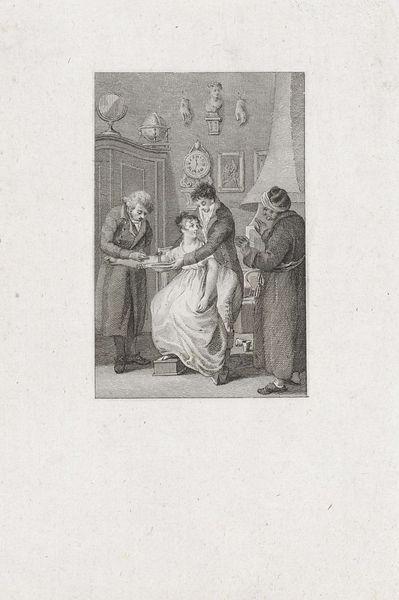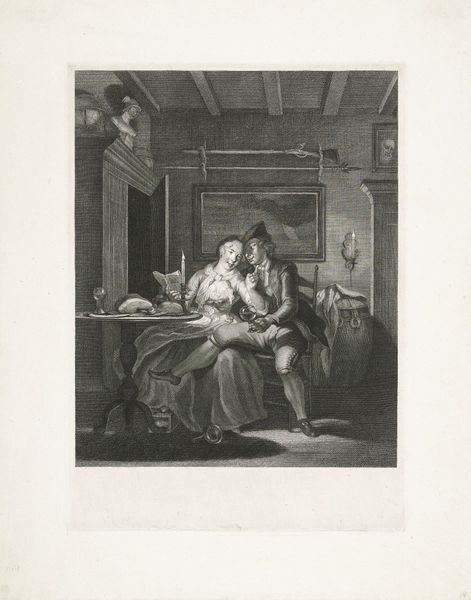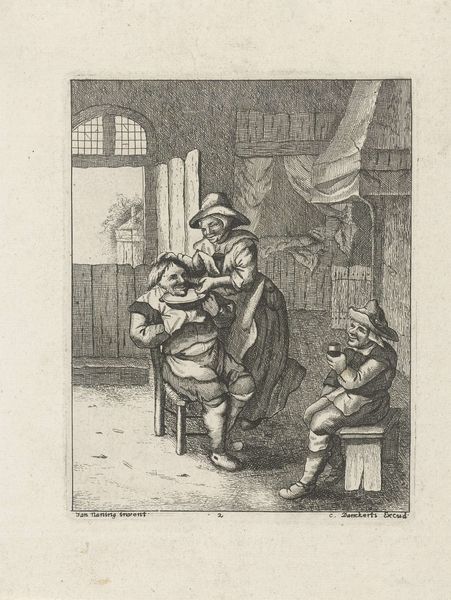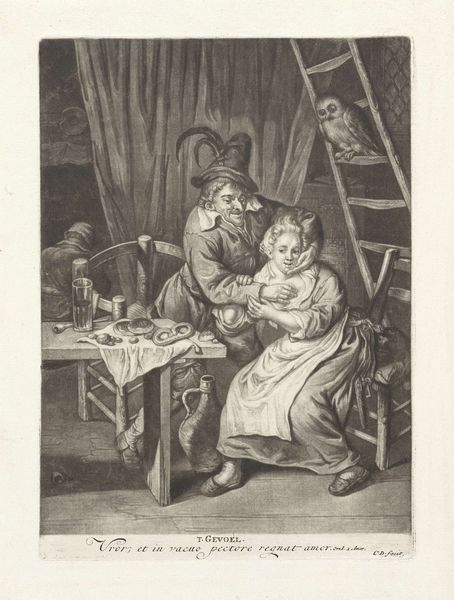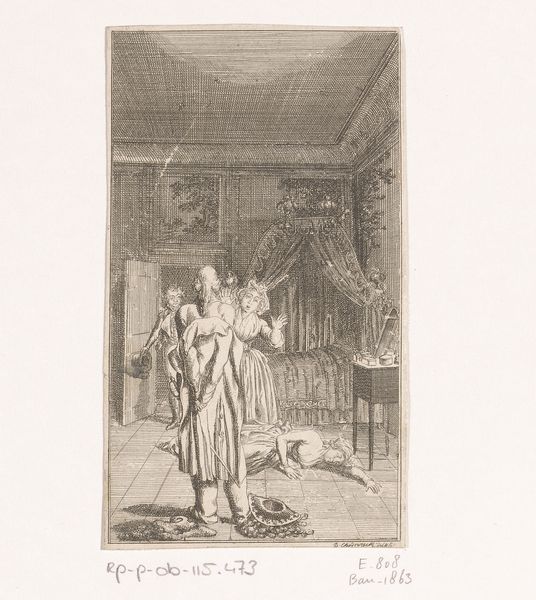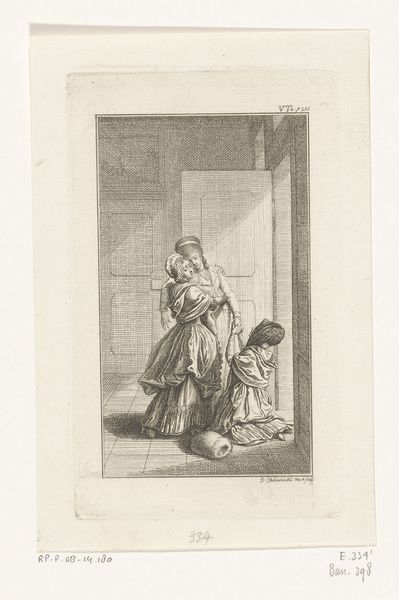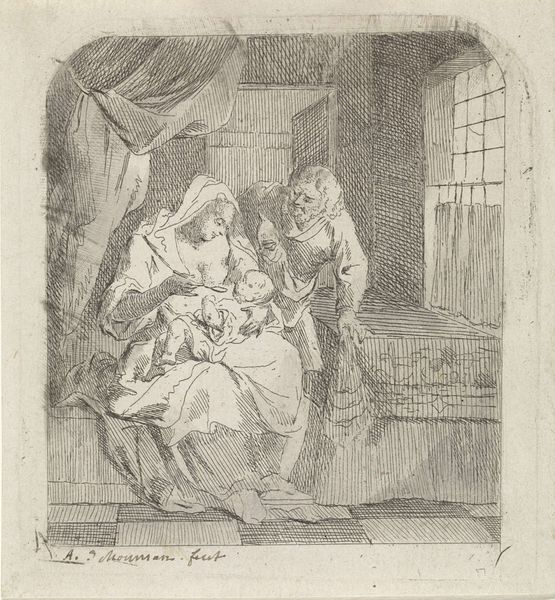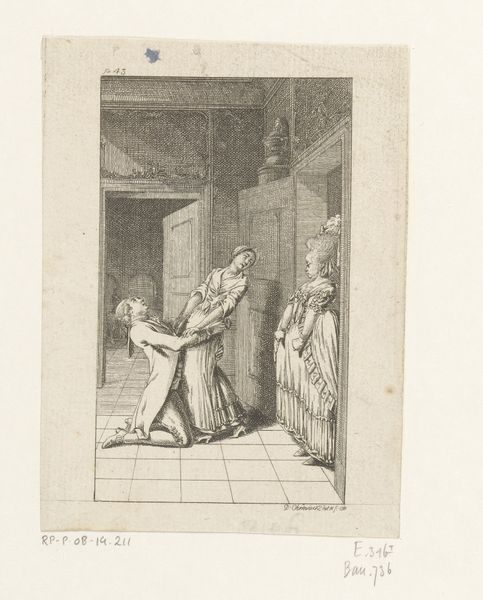
drawing, pencil
#
portrait
#
drawing
#
pencil sketch
#
figuration
#
romanticism
#
pencil
Dimensions: height 99 mm, width 77 mm
Copyright: Rijks Museum: Open Domain
Philippus Velijn created this print of a kneeling boy with a woman in a chair sometime before 1836. The act of kneeling carries a potent symbolism, one deeply rooted in expressions of supplication, reverence, and humility. Consider the evolution of this gesture: In ancient Roman art, kneeling often signified defeat or submission. Yet, within the Christian tradition, it transformed into an act of worship, seen in countless depictions of saints and biblical figures in prayer. We can trace its shifting significance through Byzantine mosaics, Renaissance paintings, and even into the Romantic era, where kneeling can express intense emotional vulnerability, as we see here. In Velijn's print, the act of kneeling evokes a complex emotional state, engaging us on a subconscious level. The vulnerability of the figure connects to the archetypal motif of seeking comfort from a maternal figure, a theme that echoes across cultures and throughout art history. It’s a powerful force, tapping into our collective memory of dependence, nurture, and the eternal search for solace.
Comments
No comments
Be the first to comment and join the conversation on the ultimate creative platform.

